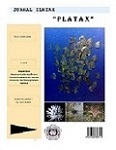Catch Per Unit Effort (Cpue) Of Purse Seine Fishery For A Period Of 5 Years At The Tumumpa Coastal Fishing Port
DOI:
https://doi.org/10.35800/jip.v11i1.43527Keywords:
CPUE, production data, purse seine, utilization rateAbstract
This study aims to analyze the five-year development of CPUE (catch per unit effort) and to find out the fishing effort of ring seine at PPP Tumumpa and its effect on CPUE periodically. Based on the research results, the CPUE value of large pelagics has decreased every year, where the CPUE value in 2017 was 25.42%, in 2018 it was 25.08%, in 2019 it was 17.71%, in 2020 it was 17.10%. , the last in 2021 was 14.66% and for small pelagics, the CPUE value decreased, where the CPUE value in 2017 was 21.70%, in 2018 it was 17.92%, in 2019 it was 17.19%, in 2018 it was 17.19%. in 2020 is 23.13%, and the last in 2021 is 20.04%. Utilization rates in large and small pelagics are in a state of concern as CPUE decreases yearly.
Keywords:Â CPUE, production data, purse seine, utilization rate.
Abstrak
Penelitian ini bertujuan untuk menganalisis perkembangan lima tahun CPUE (catch per unit effort) dan mengetahui upaya penangkapan perikanan pukat cincin di PPP Tumumpa serta pengaruhnya terhadap CPUE secara periodik. Berdasarkan hasil penelitian nilai CPUE pelagis besar mengalami penurunan setiap tahun, dimana nilai CPUE pada tahun 2017 yaitu 25,42 %, pada tahun 2018 yaitu 25,08 %, pada tahun 2019 yaitu 17,71 %, pada tahun 2020 yaitu 17,10 %, terakhir pada tahun 2021 yaitu 14,66 % dan untuk pelagis kecil nilai CPUE mengalami penurunan, dimana nilai CPUE pada tahun 2017 yaitu 21,70 %, pada tahun 2018 yaitu 17,92 %, pada tahun 2019 yaitu 17,19 %, pada tahun 2020 yaitu 23,13 %, dan terakhir pada tahun 2021 yaitu 20,04 %. Tingkat pemanfaatan pada pelagis besar dan kecil berada dalam keadaan mengkhawatirkan karena CPUE mengalami penurunan setiap tahun.
Kata Kunci: CPUE, data produksi, pukat cincin, tingkat pemanfaatan.
Â
References
Cunningham, S., M.R Dunn, and D. Whitmarsh. 1985. Fisheries Economics: An Introduction. Mansell Publishing Limited Edition. St. Marthin’s Press, New York.
Gulland, J.A. 1983. Manual of Method for Fish Stock Assessment. FAO. 223P
Mochar MS. 2002. Metode Penelitian. PT Bumiaksara Jakarta.
Muhammad Ali Gunawan. Analisis Regresi
Nazir, M. 1993. Metode Penelitian. Penerbit Ghalira Indonesia. Halaman 46 -61.
Nedelec. 2000. FISH LAMPS. Japanese Fishing Gear and Methods Textbook for Marine Fisheries Research Course. Japan. (terhubung berkala) http:fisheries.com/index.html(18 Oktober 2010).
Sparre P, Venema SC. 1998. Introduction to tropical tuna assessment Part I. Manual Fish.Tech.Paper. Food and Agriculltural Organization (FAO).
Wurlianty H. A, J. Wenno, M.E Kayadoe. 2015. Catch per unit effort (CPUE) periode lima tahunan perikanan pukat cincin di Kota Manado dan Kota Bitung. Jurnal Ilmu dan Teknologi Perikanan Tangkap 2(1): 1-8.
Downloads
Published
How to Cite
Issue
Section
License
Copyright (c) 2022 Mariana Saragih, Ivor Lembondrong Labaro, Revols D.Ch Pamikiran, Lefrand Manoppo, Fanny Silooy

This work is licensed under a Creative Commons Attribution-NonCommercial 4.0 International License.
COPYRIGHT
Authors who publish with this journal agree to the following terms:
Authors hold their copyright and grant this journal the privilege of first publication, with the work simultaneously licensed under a Creative Commons Attribution License that permits others to impart the work with an acknowledgment of the work's origin and initial publication by this journal.
Authors can enter into separate or additional contractual arrangements for the non-exclusive distribution of the journal's published version of the work (for example, post it to an institutional repository or publish it in a book), with an acknowledgment of its underlying publication in this journal.
Authors are permitted and encouraged to post their work online (for example, in institutional repositories or on their website) as it can lead to productive exchanges, as well as earlier and greater citation of the published work (See The Effect of Open Access).






































